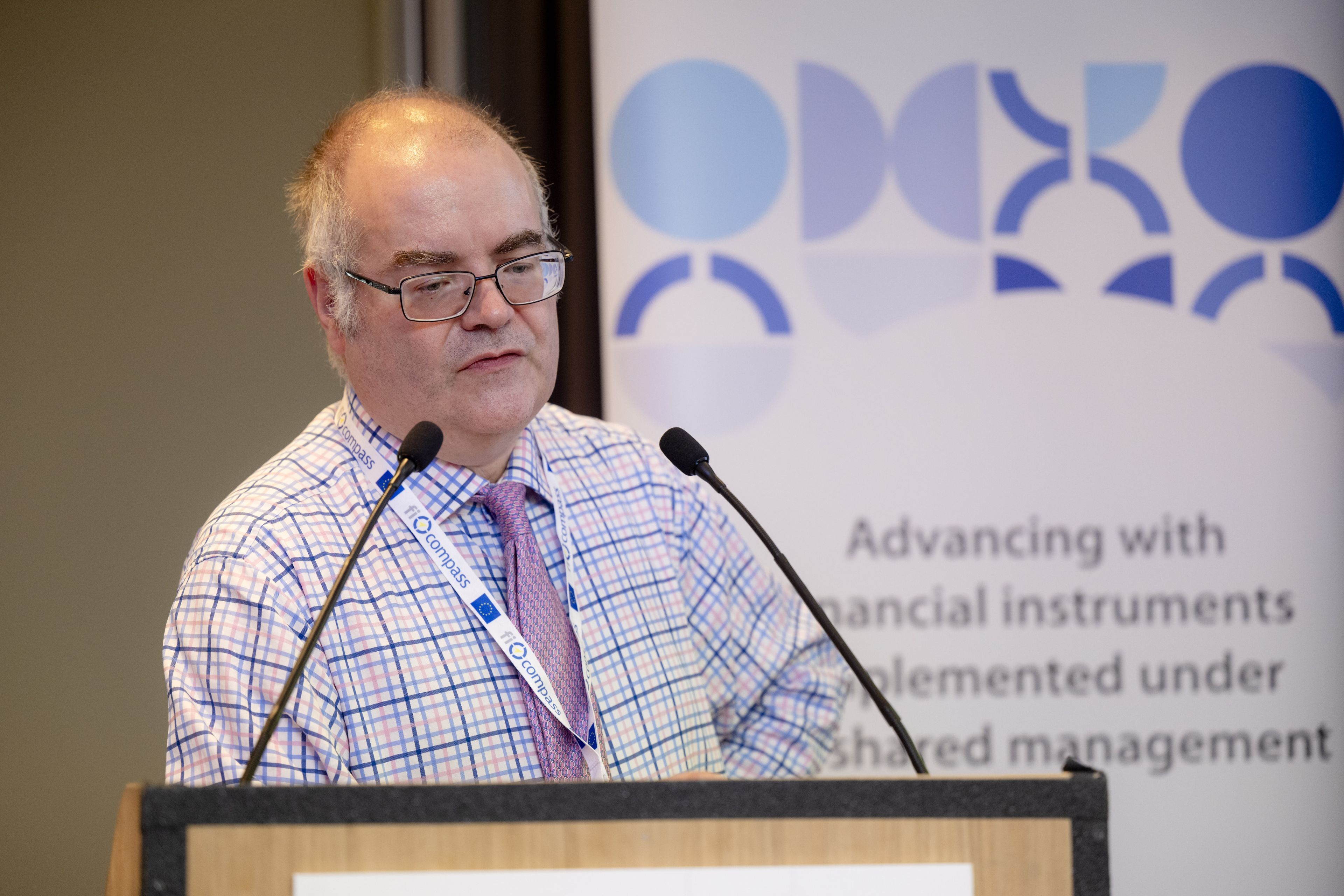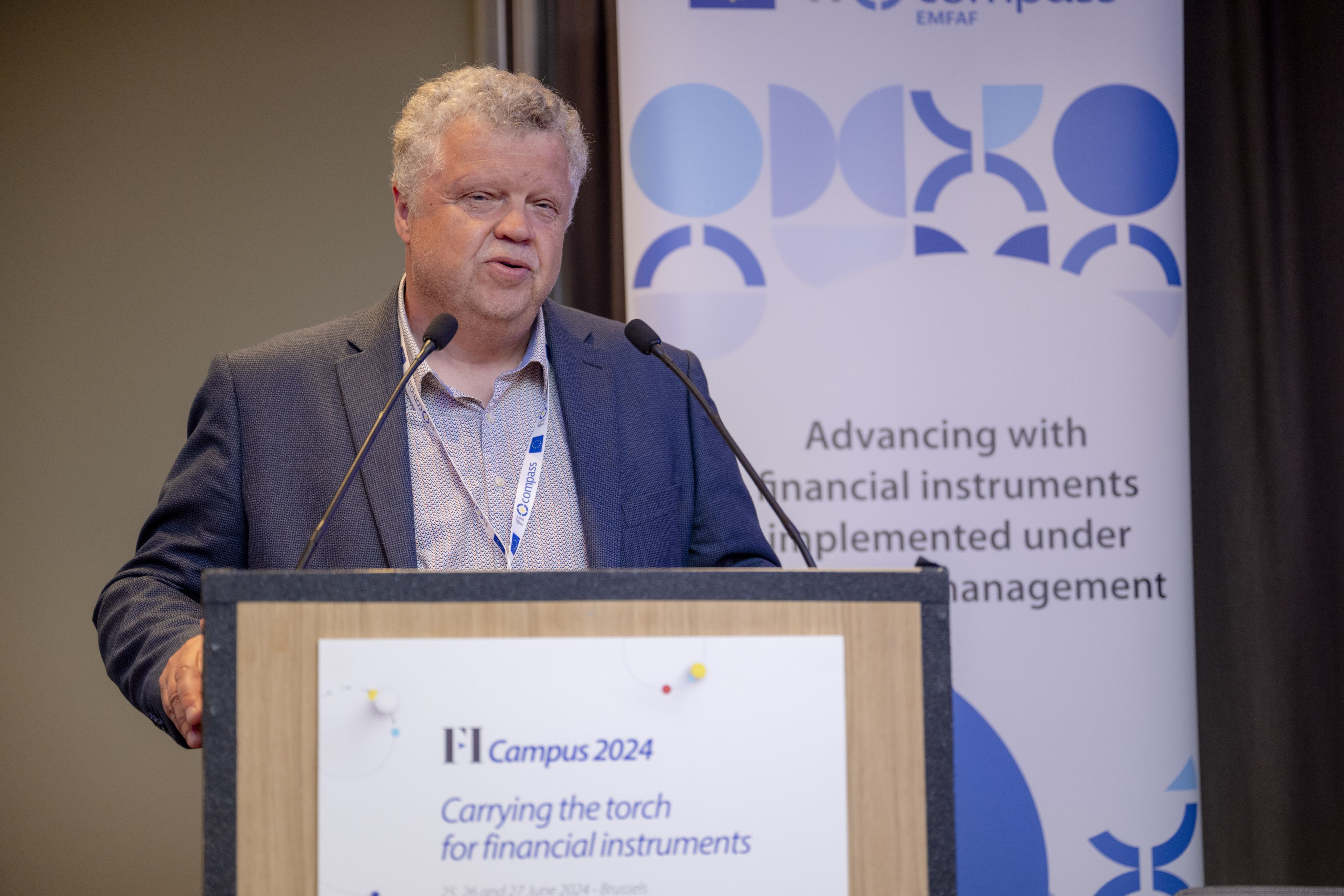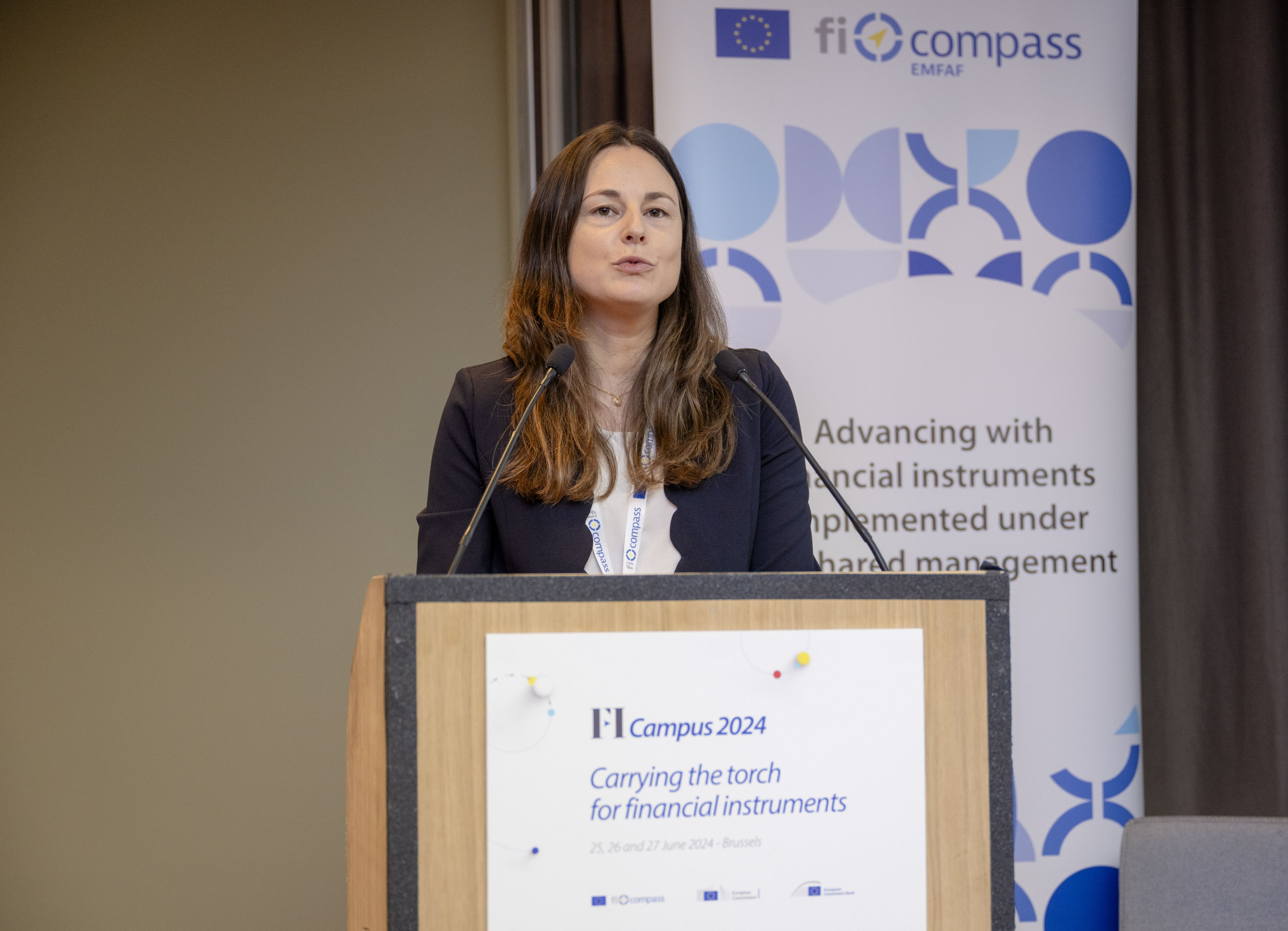At the flagship FI Campus 2024 held in Brussels this June, experts shared useful advice and knowledge about financial instruments under the European Maritime and Fisheries and Aquaculture Fund (EMFAF).
The session titled EMFAF financial instruments in support of sustainable and resilient fisheries and aquaculture, moderated by Miglena Dobreva, a financial instruments advisor at the European Investment Bank, opened on the state of play of these financial instruments in the 2021-2027 programming period. Although they saw limited deployment during the 2014-2020 period, a recent fi-compass study revealed some potential to increase the use of instruments under the EMFAF, which entered into force on 14 July 2021.

“Our message is clear: there is still room for financial instruments in the sector and we, at fi-compass as well as the EU Commission, are always here to lend support”, Miglena Dobreva, a financial instruments advisor at the European Investment Bank.

Richard Croft, Policy Officer, DG MARE, European Commission.
Richard Croft, a policy officer at the European Commission Directorate-General for Maritime Affairs and Fisheries (DG MARE), opened the session by setting out the state of play of financial instruments’ use in the Member States, and illustrated some of the key benefits of using them.
A useful instrument for long-term financing
Discussions have also revealed a degree of continuity in the few Member States that have already begun to use these financial instruments. Estonia, a pioneer in implementing European Maritime and Fisheries Fund (EMFF) instruments, used them twice in the fisheries and aquaculture sectors, including in processing.
“Our country is definitely interested in implementing them again in the 2021-2027 programming period, as we found them suitable for our needs,” said Toomas Kevvai, CEO of the Central Union of Estonian Fish Producers. During the session, Kevvai also advocated for a more open approach to the “taboo” subject of fleet renewal. Estonia’s trawlers are 38 years old on average (versus 33 years for the EU average), and not particularly environmentally friendly.

Toomas Kevvai, CEO, Central Union of Estonian Fish Producers, Estonia.
Learn about a financial instrument that uses the European Maritime and Fisheries Fund (EMFF) in Estonia.
“Financial instruments are needed to promote investments where there is a market failure and private financial institutions are not interested or are abnormally expensive.
Vessels do not make attractive collateral, as their features are very specific and they are often tied to fishing rights. Some investments in fisheries take a very long time to pay back, so there is a need for long-term loan resources with a grace period – for new trawlers, fish farms and investments in structural development,” he added.
As a possible solution to this financing shortage, Kevvai advocated for a combination of measures, including grants and other forms of support.

Finland will join in
Finland has expressed interest in using financial instruments in the 2021-2024 programming period. Antony Starr, a senior specialist at Finland’s Ministry of Agriculture and Forestry, explained that “energy transition and attracting new fishers are things that the sector is interested in. We feel that financial instruments could be a potential tool in these matters,” he said. They were also being considered by six additional Member States: Bulgaria, Greece, Croatia, Italy, Lithuania and Poland.
To find its feet in the world of EMFAF financial instruments, the Finnish managing authority first availed itself of the EIB/FI Compass tailored training programme in autumn 2021, in addition to completing two ex-ante reports in autumn 2019 and 2022. These revealed a deficit in the supply of finance for SMEs, and a clear lack of knowledge of the sector specific nuances by commercial banks.
“The problems fishery SMEs face are company-specific, such as insufficient collateral or uncertainty around the cash flow of the investment project. There is a lack of collateral for loans, especially from small-scale fishers and those just starting up their business,” Starr said, adding: “The success of the Member State Estonia has convinced us to join in.
We have been in close contact with our Estonian colleagues to learn about their experience in the field. Earlier this year we visited the Ministry of Regional Affairs and Agriculture of Estonia, and also the Rural Development Foundation (Maaelu Edendamise Sihtasutus - MES), which acts as Estonia’s financial intermediary for financial instruments in agriculture, fisheries and aquaculture sectors.”
“The main things we learned were: First, the required reporting on financial instruments is easier than the Finnish managing authority initially thought; and second, having a single body deal with financial instruments in agriculture, fisheries and aquaculture sectors seems to lead to a concentration of benefits.”
The ex-ante reports also identified three suitable financial instruments for Finland’s fisheries industry.
- The first is a capped guarantee portfolio targeting SMEs and microenterprises to help address the lack of collateral in the sector, especially for young anglers and aquaculture companies.
- The second is the risk-sharing loan instrument to help SMEs access finance and better loan terms, with lower interest rates and longer repayment periods.
- The third is a collective investment instrument for SMEs with relatively high-risk profiles, although this is seen as “a more complicated instrument that will take more time to set up.”
“The capped guarantee portfolio is our favourite because it is the simplest instrument to implement, but also because it would lower the capital access threshold for small-scale coastal and inland fisheries, which are our main focus as a country with many lakes,” Starr said. His country is planning to allocate between €5 million and €10 million for financial instruments, in the hope of mobilising a similar amount of private funding.
Starr also revealed that Finland will take a straightforward approach to implementing financial instruments: under the direct responsibility of the managing authority, with no intermediary.
Both the sector and the fund are relatively small, and there “can be challenges in finding financial bodies to implement them” he explained.

“Finnish EMFAF funds are relatively small. The demand for funds is higher than what is available. However, it is important to gather experience of using financial instruments, and of their benefits during the current EMFAF period”, Antony Starr, senior specialist at the Ministry of Agriculture and Forestry, Finland.

Camille Richer, Environmental Fund Manager, BlueSeeds, France wants to see more EMFAF support go to sustainable small-scale fishing projects.
The case of small-scale fisheries was also discussed by Camille Richer, an environmental fund manager at BlueSeeds France who wants to see more EMFAF support go to sustainable small-scale fishing projects. They still lack access to EU funding, despite their great social, economic and environmental impact.
Camille Richer manages BlueMove, a French non-profit organisation created in 2022 with a private donation of €1 million, which aims to develop sustainable fishing practices by helping small-scale fishers in the Mediterranean making more use of EU funding.
The organisation offers technical support, which is key in preparing robust project proposals for submission to the EMFAF managing authorities.
BlueMove also provides financial support thanks to partnerships with banks, in the form of guarantees or microloans to obtain capital up front, before receiving the EMFAF subsidy. Their current work in Croatia gathered 56 applications for a total of €1.9 million, on topics such as:
· CO2 reduction: stability mechanisms, autopilot, propeller, solar system, anti-fouling systems
· Selectivity: bigger mesh size for nets, creels for shrimps and eels, developing gear for catching invasive species (blue crab)
· Added value: refrigeration equipment, processing of own catch, ecolabel
· Revenue diversification: fishing tourism
The session participants also highlighted that investments around selecting engines for lower emissions and higher engine efficiency are covered by financial instruments, which makes EMFAF financial instruments a good tool for transitioning older vessels in the sector.
Ana Peralta Baptista, a team leader for the Blue Economy and Energy Transition at the European Commission, also spoke about the Commission’s ambition to push for the transition of the EU fisheries and aquaculture sector. A Commission communication adopted in February 2023 sets out a vision for climate-neutral fisheries by 2050 and proposes 27 actions to overcome the current barriers facing the sector in four main areas: stakeholder collaboration, financing, skills development and innovation.
Baptista also mentioned the Commission’s move to establish the Energy Transition Partnership (ETP) in Fisheries and Aquaculture, a bottom-up advisory group that will play a key role in advancing the sector’s energy transition.
“Members of the ETP Support Group will have a unique opportunity to shape best practices and develop the energy transition roadmap, ensuring the sector’s sustainability for a carbon neutral sector by 2050,” she said.

Ana Peralta Baptista at the most recent FI Campus event, Team Leader Blue Economy & Energy Transition, DG MARE, European Commission.
“The total EMFAF budget for 2021-2027 is only €6.108 billion, too small to address the climate challenge in the sector. The EU Commission realises this and is discussing incentives to increase the use of financial instruments post-2027,” moderator Dobreva said in closing.
“This is a journey that is evolving. Our message is clear: there is still room for financial instruments in the sector and we, at fi-compass as well as the EU Commission, are always here to lend support,” she concluded.
This video presents three interviews about financial instruments for the European Maritime and Fisheries Fund (EMFF).